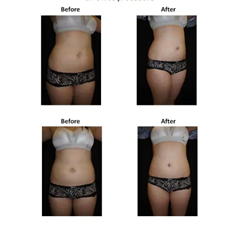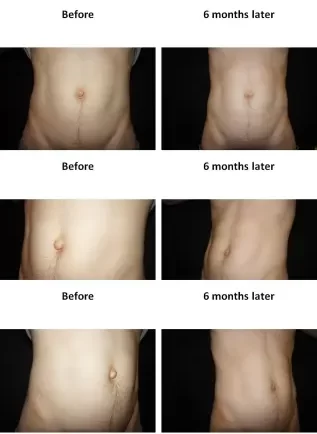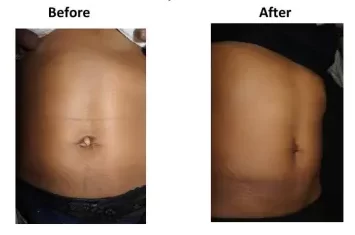The belly button, or umbilicus, is a significant aesthetic feature of the abdomen. Over time, whether due to pregnancy, weight fluctuations, hernia or genetics, its appearance may change, leading to dissatisfaction. Umbilicoplasty is a surgical procedure to reshape or repair the belly button.
The term “umbilicus” refers to the belly button, while “plasty” refers to reconstruction, or reshaping. This procedure is becoming more common as people seek cosmetic improvements for a more attractive abdomen, especially with trends in fashion emphasizing exposed midriffs.
Different Shapes and Sizes of Belly Buttons
Everyone’s belly button is unique in shape and size, influenced by factors like muscle tone, surrounding fat distribution, skin elasticity, hernia and cultural heritage. Common shapes include:
* Innie: The most common and considered attractive by many. It appears as a small depression in the abdomen.
* Outie: This occurs when the umbilical scar tissue is more prominent, protruding outward.
* Horizontal: A flat or horizontal navel shape, often seen in people with looser abdominal skin.
* Vertical/Elongated: A longer, oval-shaped belly button.
* No Defined Shape: Some individuals may lack a clear belly button shape due to surgeries or trauma.
Aesthetics of a Beautiful, Youthful Belly Button
A youthful and pleasing belly button is typically:
* Small, tight, and often round or vertically elongated.
* Centrally located and proportional to the size of the abdomen.
* Lacking visible scars or herniation.
As fashion has evolved, especially with the popularity of crop tops and swimwear, more people are seeking ways to improve the look of their belly button, striving for a youthful and natural appearance.
Why Do People Seek Umbilicoplasty?
* Unsatisfactory Belly Button Shape: Many people are unhappy with the natural shape of their belly button, whether they are born with an outie or develop an asymmetrical or stretched navel.
* Post-Pregnancy Changes: Pregnancy can significantly alter the appearance of the belly button, often leading to stretching or a “flatter” look.
* Umbilical Hernia: A small hernia can protrude from the belly button, creating a noticeable bulge.
* Cosmetic Reasons: Some individuals want a more attractive, symmetrical belly button to complement their overall appearance, especially with exposure during certain clothing styles.
Importance of Identifying an Underlying Hernia
An umbilical hernia is a common condition where part of the intestine or fatty tissue pushes through a weakness in the abdominal muscles near the belly button. It can cause the belly button to protrude, especially when under strain.
Before performing an umbilicoplasty, it is essential to check for any underlying hernia by clinical examination and / or with ultrasound . If present, the hernia must be repaired to prevent further complications.
Techniques for Umbilicoplasty at MACS Clinic
Innie Creation: For those with an outie, the excess skin or herniated tissue is removed, and the belly button is reshaped into a more desirable shape and size.
Hernia Repair: If a hernia is present, it will be repaired simultaneously, ensuring both function and aesthetics.
Reshaping: For individuals who want to change the shape or size of their navel (e.g., making a flat or elongated navel rounder), incisions are made inside or around the belly button, allowing Mr. Vadodaria to tighten and reshape the area.
The procedure typically lasts 20-45 minutes and can be done under local or general anaesthesia. Dissolvable stitches are used, eliminating the need for removal.

Post-Operative Care and Recovery after Umbilicoplasty at MACS Clinic
* Rest: Recovery generally takes around a week. You will be advised by Mr. Vadodaria to rest and avoid strenuous activities.
* Medications: A course of antibiotics will be prescribed by Mr. Vadodaria to prevent infection, and paracetamol is usually sufficient for pain management.
* Swelling: Some bruising and swelling are expected but should subside within a few days.
Risks and Potential Complications
Though complications are rare, they may include:
* Scarring or asymmetry
* Bleeding
* Infection
* Unsatisfactory cosmetic results that may require revision surgery
* Under correction / over correction / Asymmetry
Contact us:
02070784378
www.macsclinic.co.uk
info@macsclinic.co.uk
Before and After Photos









